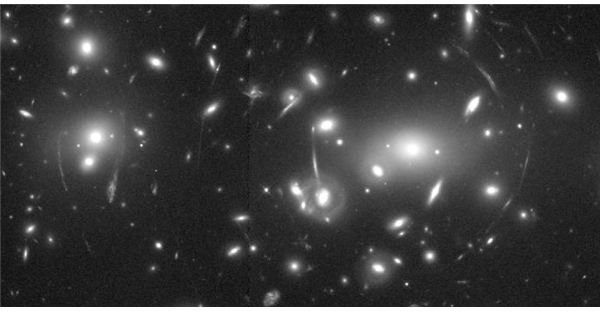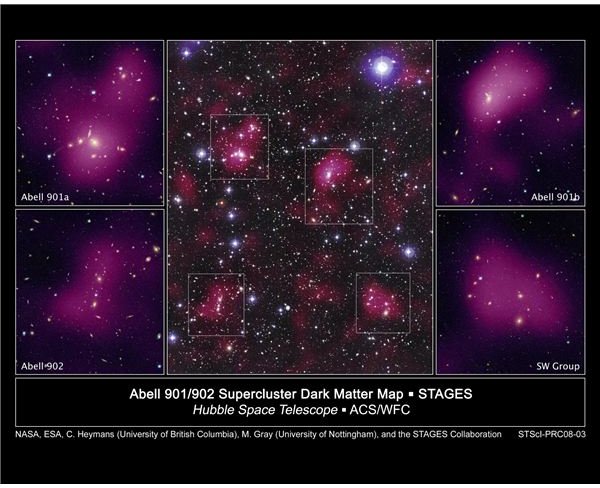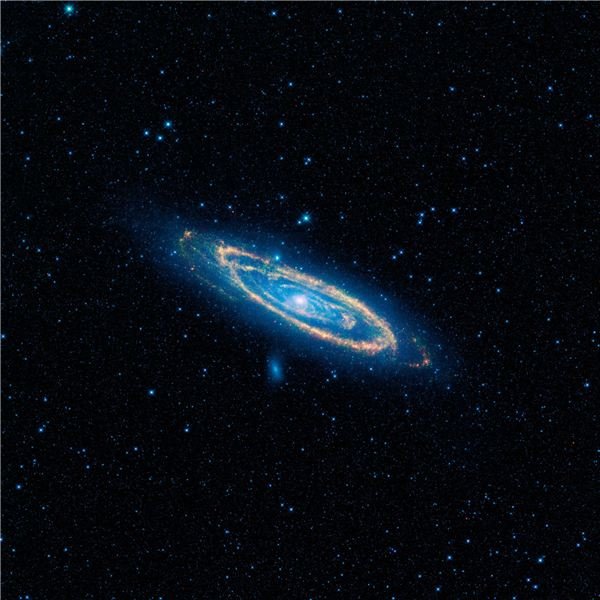Galaxy Supercluster Walls - Filaments - in Space
Galaxies of Stars
Beyond merely gas and dust, galaxies such as our own Milky Way consist of stars—seemingly endless numbers of them. An estimate of those contained in the Milky Way, a typical galaxy, is 100 to 300 billion. The Hayden Planetarium website puts the number of galaxies in just the observable part of our Universe at 80 to 100 billion stars, whereas NASA points to the Hubble Space Telescope website estimate for the complete Universe. In that estimate, the number of galaxies equals the number of stars mentioned earlier! These numbers may prove conservative.
Andromeda Galaxy
Galaxy Clusters and Superclusters
But even as stars can be associated with galaxies, galaxies can be associated with clusters—much as grapes occur, not individually, but in clusters. NASA says hundreds, even thousands of galaxies can be found in one galaxy cluster.

Now consider a grape vine as a whole. Does only one grape cluster occur on a vine? No, often there are many. So it can be with clusters of galaxies. Several galaxy clusters can be associated together as a cluster of clusters—a supercluster. It would seem unlikely there could be many such massive structures in the Universe. Correct? Not so. There are many. Some of which have even been given specific names. Among some close by are the Virgo supercluster, the Hydra supercluster and the Centaurus supercluster.
Abell 2218 Galaxy Cluster

Abell 901/902 Supercluster Map
Still Larger Structures
Incredibly, the association of galaxies in superclusters may not represent the upper limit of universal structure. Since approximately 1987, some scientists are reporting clusters of galaxies connected together in what appear to be loosely woven walls or sheets containing large bubble-like voids. One such complex is called the Pisces-Cetus Supercluster Complex. This structure is considered one of the largest in the Universe; however, even it is exceeded by the Sloan Great Wall (or galactic filament), measuring approximately 1.37 billion light years in length and visible in this NASA Astronomy Picture of the Day.
The Max Planck Institute for Astrophysics provides a simulated image of a galactic filament. Perhaps the best visualization, however, may be seen in the graphic by Richard Powell, shown below. Notice in particular the voids.

Combined, the filament and void areas can be visualized as a kind of spider web. In fact, the combination is sometimes referred to as the “cosmic web.” Videos enabling visualization of the Sloan Digital Sky Survey (the study of a quadrant of the Universe) may be accessed via the University of Chicago website, referenced below. Current cluster evolution theory focuses on dark energy/dark matter as the driving force.
Superclusters Atlas of the Universe
Further Technical Insight
The purpose of this article has been to offer insight into the ever-increasing levels of structure of the Universe. Some may wish, however, to probe a little deeper into each of the above areas of cosmic structure. One source offering an increased understanding to the technically minded is the article entitled “Galaxy Formation in the Filamentary Cosmic Web,” by Oliver Hahn, ETH Zurich. That information may be both viewed and downloaded from the Berkeley Cosmology Group Website.
An Interesting Quotation
Objects both at the atomic and the astronomical levels have always been visualized as simpler than time later reveals them to be. Will there be more complex structures still to discover? The biological cell was once thought of as being little more than a cell wall, a nucleus, and included cytoplasm. In modern times, dozens upon dozens of intricate structures are being discovered. It seems logical that mankind has only scratched the surface of the cosmos.
Interestingly, the idea of a filamentous gauze in space is referenced much earlier than 1987 or, indeed, any year of the Twentieth Century. It is referenced as early as the 8th century before Christ: “There is One who is dwelling above the circle of the earth, the dwellers in which are as grasshoppers, the One who is stretching out the heavens just as a fine gauze, who spreads them out like a tent in which to dwell.” - Isaiah 40:22.
Could this “fine gauze” be an allusion to galaxy filament structure? That is best left up to the reader to determine for himself.
-—-
Also from Bright Hub: Defining the Local Group of Galaxies, by RC Davison
References and Resources
NASA HEASARC: The Nearest Superclusters
Smithsonian/NASA Astrophysics Data System: The Pisces-Cetus Supercluster Complex
Max Planck Institute for Astrophysics: 2002 Highlight Graphic (Galactic Filament)
University of Chicago - Department of Astronomy & Astrophysics: The Universe as Mapped by SDSS and WMAP
Hayden Planetarium: How many galaxies are there?
Berkeley Cosmology: Galaxy Formation in the Filamentary Cosmic Web
Image Credits
Andromeda Galaxy: NASA/JPL-Caltech/UCLA
Abell 2218 Galaxy Cluster: NASA, HST, WFPC2, W. Couch (UNSW)
Abell 901/902 Supercluster Map: Space Telescope Science Institute (NASA Hosted)
Superclusters Atlas of the Universe: Wikimedia Commons, by Richard Powell
